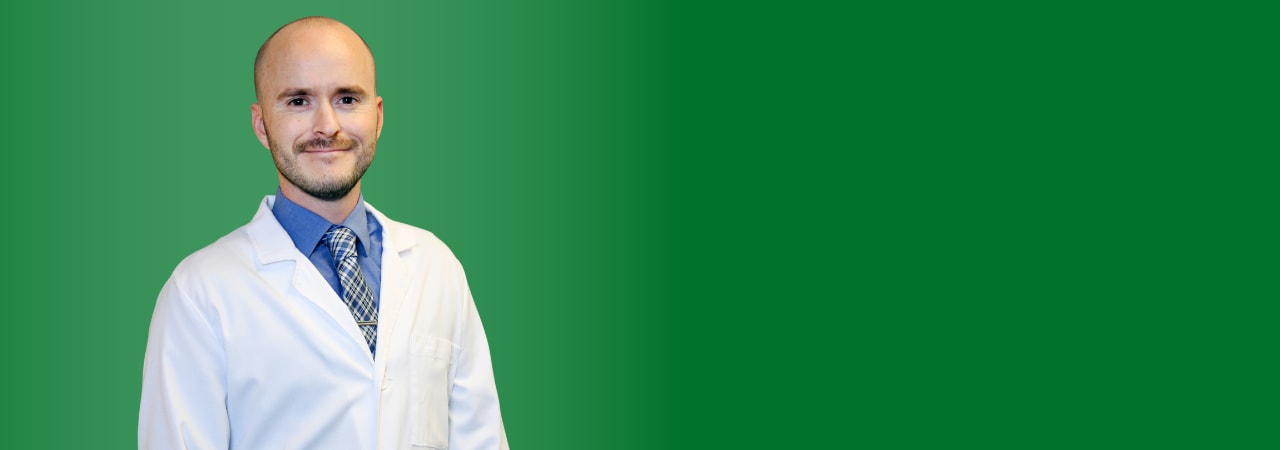Headaches: Top 5 Questions & Answers (Q&A)
Written by: Thomas Geigert, NP, Bronson Neuroscience Center
Q: What causes headaches?
A: There are two overall main causes for headaches.
These can be divided into 2 groups, primary headache disorders and secondary headache disorders.
-
Primary headache disorders are a disease state in which the patient is overall hypersensitive to stimuli in the environment such as weather changes, certain foods, or poor lifestyle factors.
-
Secondary headache disorders are when there is another disease process that is causing the headache. A few examples of these include sickness, structural causes, and high or low intracranial pressure.
Q: What are the different kinds of headaches you can get? Do neurologists only treat certain kinds of headaches?
A: There are many different types of headaches both primary and secondary headache disorders. Our neurology experts can diagnose and treat all of these.
- Primary headache disorders
- Tension headaches are the most common type of headache, often described as a band-like pain and/or pressure around the head. There can be light sensitivity OR sound sensitivity associated with these but not both. There is NO nausea or vomiting with these types of headaches.
- Migraine headaches are a very common type of headache we treat in the clinic. described as one-sided headaches that are either pulsing or throbbing in nature. They generally have associated light sensitivity, sound sensitivity, nausea and/or vomiting. Motion or movement typically worsens these migraine headaches.
- Cluster headaches & other trigeminal autonomic cephalagias headaches tend to have a pattern of recurring episodes, or “clusters” and often occur during specific times of the year, such as spring or fall and they typically happen at the same time every day. People may have very severe, disabling pain and have one-sided facial features including, a runny or stuffy nose, eye redness, drooping eyelid and swelling on the affecting side.
- There are many other primary headache disorders including:
- Primary stabbing headache
- Primary cough headache
- Primary exertional headache
- Primary headache associated with sexual activity
- Hypnic headache
- Secondary headache disorders. There can be many diseases or causes or secondary headache disorders. Some examples are:
- Subdural hematoma is a type of brain bleed, where a blood vessel rupture causing pressure on the brain and skull.
- Preeclampsia can cause increased blood pressure during pregnancy and cause increased headaches.
- Tumors or other structural causes. For patients over 50 years old or so, we evaluate for tumors if there is a new onset headache to determine a potential cause.
- Intracranial hypertension or hypotension may be associated with position changes, where the headaches worsen with lying down (intracranial hypertension).
- Medicine overuse headache can sometimes get worse by taking too many over-the-counter medications such as Tylenol, Ibuprofen and Excedrin and can make headaches more difficult to manage overall.
Q: How do neurologists treat headaches?
A: When first seeing a neurologist, they will obtain a complete medical history and review the history of your headaches.
A neurologic examination will also be performed. The neurologist may need to order a CT scan or MRI of your brain to determine what is causing your headaches. If your headache fits the criteria for a migraine, they may not need to order testing.
Typical questions a neurologist may ask are:
- When did your headaches start?
- Can you describe your headache?
- How many headaches a week or month do you get?
- How long do they last?
- What medications are you taking for your headaches? How often?
- What makes your headaches worse? What makes them better?
Q: How do neurologists treat migraines?
A: In addition to the above, they will review lifestyle factors that may contribute to migraines.
Lifestyle factors include:
- Getting good sleep. Typical recommendations include getting at least eight hours of restful sleep and trying to keep on the same sleep schedule (ie going to bed at the same time every night).
- Drinking plenty of water. We recommend that you drink about eight, eight-ounce glasses of water a day. This has been shown to help with migraines.
- Eating a heart healthy diet. You also may note food triggers that set off your migraines.
- Getting plenty of exercise.
- Management of anxiety and depression.
If making changes to lifestyle factors is not enough to treat your migraines, they may consider medications.
- Abortive medicine. This medicine can be taken as needed for immediate relief.
- Over-the-counter pain relievers, including Ibuprofen or Aleve.
- Triptans is a prescription medication taken as needed for migraines. Examples include Imitrex (sumatriptan) and Maxalt (rizatriptan).
- CGRP antagonists are newer prescription medications which include Ubrelvy (ubrogepant) and Nurtec (rimegepant).
Preventative medicine. If a patient is having many migraine days in a month that are not controlled adequately by abortive medications, your doctor may recommend a preventative medication. Some examples include:
- Antidepressants such as amitriptyline and nortriptyline.
- Anti-seizure medicine such as topiramate (Topamax) and valproic acid (Depakote).
- Blood pressure medicine Including beta blockers (propranolol, metoprolol) and calcium channel blockers (verapamil).
- Botox. OnabotulinumtoxinA injections every 12 weeks may be helpful for some patients.
- CGRP antagonists are newer injectable medications that can be given at home monthly to help prevent migraines.
Q: How do I schedule an appointment with a headache specialist?
A: Start by contacting your primary care doctor.
Seeing your primary care doctor is always a good place to start when you have basic questions about headaches. If your doctor has concerns about the causes or treatment of your headaches, they will refer you to a neurologist.
There are some red flags with headaches that should prompt you to notify your doctor immediately.
- If you have a new type of headache, change in headache pattern, or sudden onset of a headache.
- If you are over 50 years old and you have a new onset type of headache.
- Headaches that are either worse with lying down or standing up.
- Headaches that are started by coughing, sneezing, or exercise.
- New onset headache during pregnancy.
- A headache that starts after a head injury or accident.
- Headache associated with sickness, stiff neck, rash.
Don't have a primary care doctor? We can help you choose the right one for you or your family based on insurance, location, medical needs and personal preferences. Appointments are available online or in person. To choose a primary care doctor, schedule your first appointment online at bronsonhealth.com or call a Bronson Care Advisor at (269) 341-7788.
Bronson for Headache Care
When it comes to neurological conditions, you want a team of experts you can put your trust in right from the start. You’ll find them at Bronson – the region’s most comprehensive neuroscience center. Our specialists work together to guide your care from the initial assessment through treatment. Learn more about the exceptional neurology team at bronsonhealth.com/neuro.

Get to Know Thomas Geigert, NP
As a neurology specialist, Thomas can answer your headache questions.
Learn more
